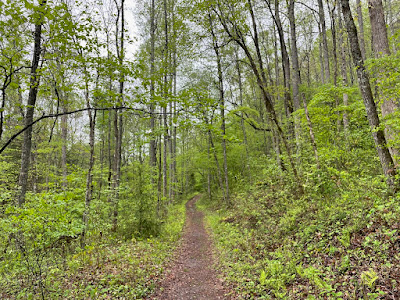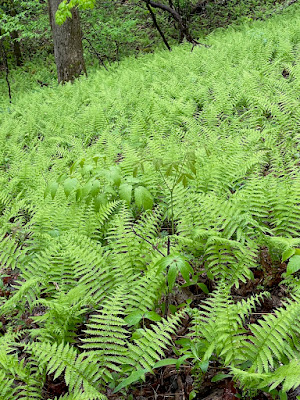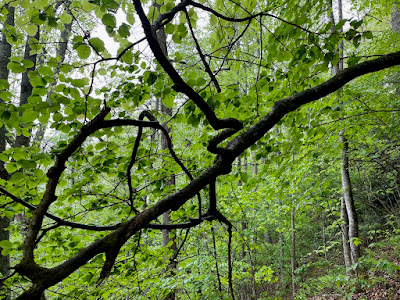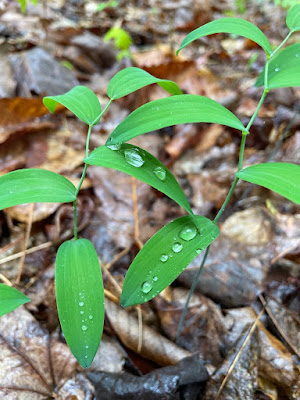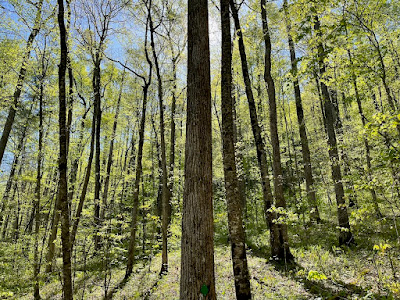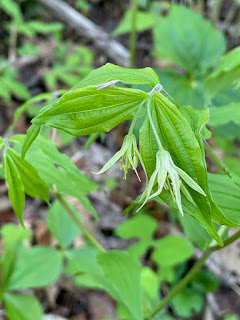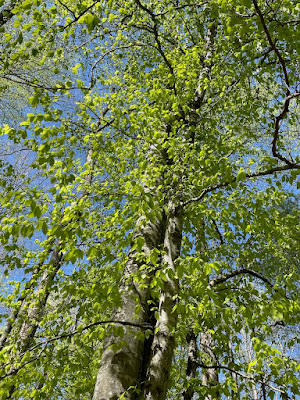One reason for the illusion may be that, like many a very tall old tree, there isn't in fact much canopy left. Life's rough up there, and lightning strike and branchfall seem common. It was hard to get any view to the canopies of these venerable trees, but here's one:
These more fortunate (perhaps younger) three give some sense of the height of these giants, the kinks and waves in whose trunks (barely visible from the base) helps convey the unprocessable height:
There are kinks and waves on this beauty, too, meaning that the glorious canopy this one still has is rather farther up than it looks:
This one fits the image I brought of an old-growth grove, whose enormous and enormously tall trees create a canopy so dense that no other trees can get a foothold below them, making for a spacious open-seeming forest floor carpeted with flower. Not that the floor is flat, as it's littered with fallen giants. (These trees can live three centuries or more, so the ones returning to the soil are even older.)
The largest fallen trees in this part of Joyce Kilmer Memorial Forest are apparently hemlocks, probably including this hospitably hollow stump. It all leaves me giddily uncertain what to think or say.
That uncertainty is connected to the fact that, grand though these trees are, they are rare only because the rest of the old forests which used to blanket these mountains - indeed the whole eastern part of the US - were felled. (I found myself feeling loggers' lust at these columns of hardwood, and wondering what buildings in Europe and
That uncertainty is connected to the fact that, grand though these trees are, they are rare only because the rest of the old forests which used to blanket these mountains - indeed the whole eastern part of the US - were felled. (I found myself feeling loggers' lust at these columns of hardwood, and wondering what buildings in Europe and
beyond are still supported by beams from these forests.) I've known that vanishingly few of the forests from before the arrival or European settlers remain, but that's awareness you can't do much with in a sucessor forest. Will having been here make me now experience those others, as Joan Maloof describes, as mere juveniles? Haunted!
















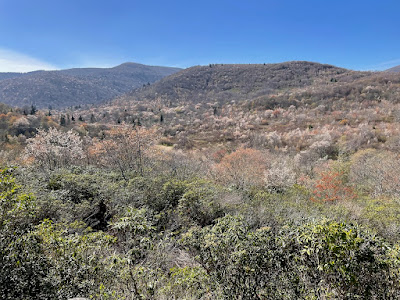





.jpeg)







